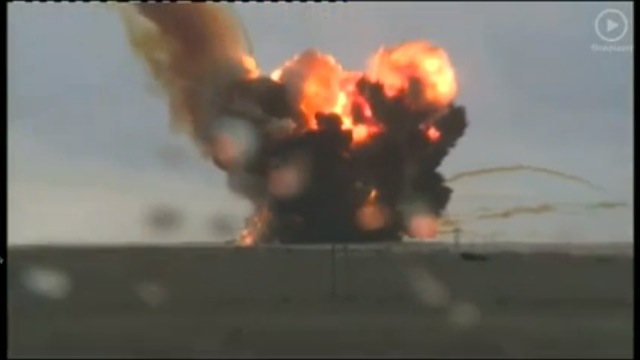SUMMARY
This is AI generated summarization, which may have errors. For context, always refer to the full article.
MOSCOW, Russia (2nd UPDATE) – An unmanned Russian carrier rocket exploded on takeoff at the Baikonur cosmodrome in Kazakhstan on Tuesday, July 2, releasing 600 tonnes of highly toxic fuel into the air in images broadcast live on television.
Spectacular footage showed the Proton-M rocket veering off its trajectory just seconds after its 6:38 am (0238 GMT) launch, before erupting into a ball of flames and unleashing clouds of noxious black smoke.
The Russian space agency Roskosmos, citing preliminary information, said the accident caused no damage or casualties.
“It seems something is going wrong,” said a television commentator during the live coverage of the launch. “Something is wrong. It seems it will be a catastrophe,” said the presenter, his voice trembling, shortly before the rocket exploded.
The rocket was supposed to take three Russian Glonass-M navigation satellites into space.
“A rocket carrier fell to the ground and exploded on the territory of the cosmodrome,” the space agency said in a statement, adding that the rocket fell on the territory of the Baikonur cosmodrome which Russia leases from ex-Soviet Kazakhstan.
The space agency said that during the accident, which took place 10-15 seconds after takeoff, toxic rocket fuel was released into the air.
Kazakh officials said the fumes that may present a danger to the local population.
A Roskosmos spokesman could not immediately say whether people living near the crash site were being evacuated.
But residents of several towns close to the cosmodrome including Baikonur were requested to stay indoors and keep their windows shut, a spokeswoman for the Kazakh emergencies ministry, Kristina Mohamed, told AFP.
The rocket carried 600 tons of kerosene, heptyl and amyl which are highly poisonous components of rocket fuel, said the head of the Kazakh space agency, Talgat Musabayev.
“A smoke cloud has now been formed out of burnt heptyl,” head of the emergencies ministry in Kazakhstan, Vladimir Bozhko, told a government meeting in Astana.

“It is now located above the territory of the cosmodrome, the speed of the wind is 2.6 meters (per second),” he said, adding the cloud could move beyond the Baikonur cosmodrome.
Bozhko was quoted as saying that according to preliminary information the accident was caused by a malfunction of a first-stage engine.
Sending the first man into space in 1961 and launching the first sputnik satellite four years earlier are among key accomplishments of the Russian space program and remain a major source of national pride in the country.
But more recently, Russia has suffered several major setbacks in its space program, notably losing expensive satellites and an unmanned supply ship to the International Space Station.
The most recent disaster brought to memory a rocket explosion at the same Baikonur cosmodrome in 1960 when a prototype rocket exploded on the launch pad and released the highly poisonous rocket fuel known as the “devil’s venom.”
During the 1960 accident, which the Russian space agency has called a veritable “inferno,” 126 people were burned alive or vaporized altogether, while others died of noxious fumes or succumbed to burns later.
The Soviet Union, which was locked in an arms race with the United States, imposed total secrecy over the disaster, and the files were only declassified in the 1990s. – Rappler.com
Add a comment
How does this make you feel?
There are no comments yet. Add your comment to start the conversation.